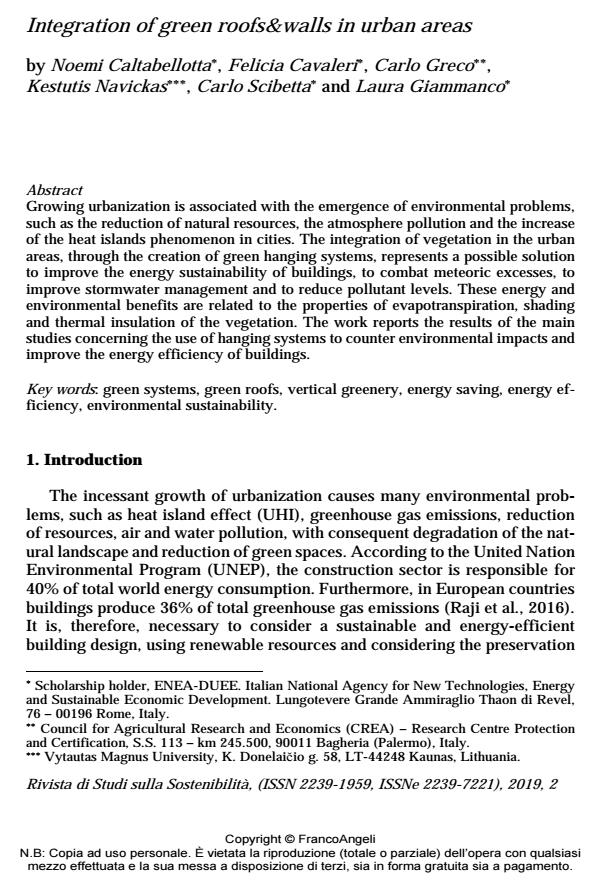Integration of green roofs&walls in urban areas
Titolo Rivista RIVISTA DI STUDI SULLA SOSTENIBILITA'
Autori/Curatori Noemi Caltabellotta, Felicia Cavaleri, Carlo Greco, Kestutis Navickas, Carlo Scibetta, Laura Giammanco
Anno di pubblicazione 2020 Fascicolo 2019/2 Suppl.
Lingua Inglese Numero pagine 18 P. 61-78 Dimensione file 138 KB
DOI 10.3280/RISS2019-002-S1005
Il DOI è il codice a barre della proprietà intellettuale: per saperne di più
clicca qui
Qui sotto puoi vedere in anteprima la prima pagina di questo articolo.
Se questo articolo ti interessa, lo puoi acquistare (e scaricare in formato pdf) seguendo le facili indicazioni per acquistare il download credit. Acquista Download Credits per scaricare questo Articolo in formato PDF

FrancoAngeli è membro della Publishers International Linking Association, Inc (PILA)associazione indipendente e non profit per facilitare (attraverso i servizi tecnologici implementati da CrossRef.org) l’accesso degli studiosi ai contenuti digitali nelle pubblicazioni professionali e scientifiche
Growing urbanization is associated with the emergence of environmental problems, such as the reduction of natural resources, the atmosphere pollution and the increase of the heat islands phenomenon in cities. The integration of vegetation in the urban areas, through the creation of green hanging systems, represents a possible solution to improve the energy sustainability of buildings, to combat meteoric excesses, to improve stormwater management and to reduce pollutant levels. These energy and environmental benefits are related to the properties of evapotranspiration, shading and thermal insulation of the vegetation. The work reports the results of the main studies concerning the use of hanging systems to counter environmental impacts and improve the energy efficiency of buildings.
Parole chiave:Green systems, green roofs, vertical greenery, energy saving, energy efficiency, environmental sustainability
Noemi Caltabellotta, Felicia Cavaleri, Carlo Greco, Kestutis Navickas, Carlo Scibetta, Laura Giammanco, Integration of green roofs&walls in urban areas in "RIVISTA DI STUDI SULLA SOSTENIBILITA'" 2 Suppl./2019, pp 61-78, DOI: 10.3280/RISS2019-002-S1005